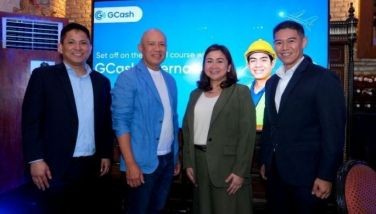Satisfaction
April 1, 2002 | 12:00am
It is very easy to see inputs as raw materials in a manufacturing process. But it is difficult to see what the inputs are in a service organization. Is it the raw material used in the process of delivering the service? Is it the gasoline or the array of lube products in a gasoline station? Is it the computer hardware and software in a gaming arcade?
The answer is, no. In a service organization, the inputs are customers who need something and the object is to have satisfied customers leave as outputs. The need is transformed into satisfaction because of the "experience" in the service transforming unit. However, do not forget that the satisfied customer must leave enough money to cover your costs and your profits. Otherwise, these satisfied people are not customers. They are just "costs-to-me" or in the vernacular, "gastos ka lang". Simply put, they are just expenses.
In a gasoline station, what do the customers need? It depends. There are several types of gas stations. The new gasoline stations found in both the North and South Expressways are positioned differently. The customers’ needs in the inner city stations are different.
Depending on which side of the expressway you happen to be driving on, the customers’ needs are different. The needs of the out-bound Metro Manila customers are different from the Metro Manila in-bound customers. Out-bound customers’ needs range from a place to eat to a place to meet a group to start a convoy of cars headed for the same place in the North or the South.
For those too young to remember the 1950s, Jack’s restaurant and its gas station (along the MacArthur Hi-way near the Bonifacio Monument in Kalookan) was the convenient joint or pit stop en route to Baguio and/or other points north of Manila It was a comfort station or a place to have a biological break, either to eat in the food outlet and/or to use the rest room.
In-bound customers’ needs range from wanting a place to wait for the lifting of the truck ban and/or the Metro Manila Development Authority’s vehicle reduction program to sitting out the Metro Manila traffic at peak periods.
What can the gas station owner do to transform the need into a purchase of fuel and other basic gas station products/services? In other words, how can the entrepreneur convert the customer’s need into a commercial transaction that makes the customer satisfied and also leaves money to cover costs and profits?
The process of transforming customers’ need into a series of sustainable commercial transactions is the key element. The transforming unit of a gasoline station in the expressway must be designed to make money because it meets the customers’ needs. The situation dictates that there must be a space to accommodate waiting vehicles. In addition, it must be a good place to wait.
But waiting vehicles do not generate revenues. In fact, this entails the allocation of a great deal of space and costs. The time to load fuel is too short a waiting period. It takes longer to eat than to load fuel. The logic of the transforming unit is to create an experience that attracts the customer to eat while waiting.
The expressway stations are really waiting areas that have food courts and, only incidentally, a gasoline station. The service transforming unit is similar, if not identical, to those enjoyed along the interstate highways of the United States.
One surmises that more money is made in the food-related transactions (rental or actual food sales) than from fuel or lube sales. The customers enter with the expectation of an experience and the service-transforming unit better provide this and make money from it.
What does the person who plays arcade games really need? If the answer is entertainment, think again. They want the thrill of taking a life-threatening risk, but not to put their real lives on the line.
Therefore, the transforming unit must simulate reality to the fullest. The closer to reality (but without physical danger) the service-transforming unit is, the more satisfied the customer. This can involve the interplay of sound, visuals and other things that contribute to the experience.
The service-transforming unit must provide a look and feel so realistic or a "near death" experience and yet free from harm.
The other need is that of letting the public know that the person has gone through the experience, survived and won the risk-taking event. As such, the service-transforming unit must announce with bells and whistles that the customer has surmounted the challenge.
Again, the service-transforming unit must meet the customer’s dual expectations: realism and acknowledgement. The key characteristic, therefore, boils down to this – the better the experience, the higher the change to make more money.
How does one manage the experience in a service-transforming unit?
First, one must understand what experience the customer is expecting. Then, design and direct the service-transforming unit in terms of the stage, the script and the actors. Much like a stage play, the lights, set design and layout generate the ambiance of the experience. The script contributes because it is what the customer hears and sees. What are the sounds and sights like? The mix of worlds, images and volume levels?
In the gas stations of the expressways, do they look like US interstate stations? In the arcade games, do they replicate the reality of battles in outer space?
In these examples, the actors are the people who deliver the service. How do they look? How are they dressed up (in costume)? In the gasoline stations, this refers not only to the employees but also to the kinds of food and retail outlets mix and how they are put together. All these factors must contribute to the expected experience of the customer.
(Alejandrino Ferreria is the associate dean of the Asian Center for Entrepreneurship of the Asian Institute of Management. For further comments and inquiries, you may contact him at: [email protected]. Published "Entrepreneur’s Helpline" columns can be viewed on the AIM website at http//: www.aim.edu.ph).
The answer is, no. In a service organization, the inputs are customers who need something and the object is to have satisfied customers leave as outputs. The need is transformed into satisfaction because of the "experience" in the service transforming unit. However, do not forget that the satisfied customer must leave enough money to cover your costs and your profits. Otherwise, these satisfied people are not customers. They are just "costs-to-me" or in the vernacular, "gastos ka lang". Simply put, they are just expenses.
Depending on which side of the expressway you happen to be driving on, the customers’ needs are different. The needs of the out-bound Metro Manila customers are different from the Metro Manila in-bound customers. Out-bound customers’ needs range from a place to eat to a place to meet a group to start a convoy of cars headed for the same place in the North or the South.
For those too young to remember the 1950s, Jack’s restaurant and its gas station (along the MacArthur Hi-way near the Bonifacio Monument in Kalookan) was the convenient joint or pit stop en route to Baguio and/or other points north of Manila It was a comfort station or a place to have a biological break, either to eat in the food outlet and/or to use the rest room.
In-bound customers’ needs range from wanting a place to wait for the lifting of the truck ban and/or the Metro Manila Development Authority’s vehicle reduction program to sitting out the Metro Manila traffic at peak periods.
What can the gas station owner do to transform the need into a purchase of fuel and other basic gas station products/services? In other words, how can the entrepreneur convert the customer’s need into a commercial transaction that makes the customer satisfied and also leaves money to cover costs and profits?
The process of transforming customers’ need into a series of sustainable commercial transactions is the key element. The transforming unit of a gasoline station in the expressway must be designed to make money because it meets the customers’ needs. The situation dictates that there must be a space to accommodate waiting vehicles. In addition, it must be a good place to wait.
But waiting vehicles do not generate revenues. In fact, this entails the allocation of a great deal of space and costs. The time to load fuel is too short a waiting period. It takes longer to eat than to load fuel. The logic of the transforming unit is to create an experience that attracts the customer to eat while waiting.
The expressway stations are really waiting areas that have food courts and, only incidentally, a gasoline station. The service transforming unit is similar, if not identical, to those enjoyed along the interstate highways of the United States.
One surmises that more money is made in the food-related transactions (rental or actual food sales) than from fuel or lube sales. The customers enter with the expectation of an experience and the service-transforming unit better provide this and make money from it.
Therefore, the transforming unit must simulate reality to the fullest. The closer to reality (but without physical danger) the service-transforming unit is, the more satisfied the customer. This can involve the interplay of sound, visuals and other things that contribute to the experience.
The service-transforming unit must provide a look and feel so realistic or a "near death" experience and yet free from harm.
The other need is that of letting the public know that the person has gone through the experience, survived and won the risk-taking event. As such, the service-transforming unit must announce with bells and whistles that the customer has surmounted the challenge.
Again, the service-transforming unit must meet the customer’s dual expectations: realism and acknowledgement. The key characteristic, therefore, boils down to this – the better the experience, the higher the change to make more money.
First, one must understand what experience the customer is expecting. Then, design and direct the service-transforming unit in terms of the stage, the script and the actors. Much like a stage play, the lights, set design and layout generate the ambiance of the experience. The script contributes because it is what the customer hears and sees. What are the sounds and sights like? The mix of worlds, images and volume levels?
In the gas stations of the expressways, do they look like US interstate stations? In the arcade games, do they replicate the reality of battles in outer space?
In these examples, the actors are the people who deliver the service. How do they look? How are they dressed up (in costume)? In the gasoline stations, this refers not only to the employees but also to the kinds of food and retail outlets mix and how they are put together. All these factors must contribute to the expected experience of the customer.
(Alejandrino Ferreria is the associate dean of the Asian Center for Entrepreneurship of the Asian Institute of Management. For further comments and inquiries, you may contact him at: [email protected]. Published "Entrepreneur’s Helpline" columns can be viewed on the AIM website at http//: www.aim.edu.ph).
BrandSpace Articles
<
>
- Latest
Latest
Latest
March 22, 2024 - 5:22pm
March 22, 2024 - 5:22pm
March 13, 2024 - 2:45pm
March 13, 2024 - 2:45pm
January 18, 2024 - 6:20pm
January 18, 2024 - 6:20pm
January 17, 2024 - 12:00am
January 17, 2024 - 12:00am
December 30, 2023 - 12:00am
December 30, 2023 - 12:00am
Recommended
























